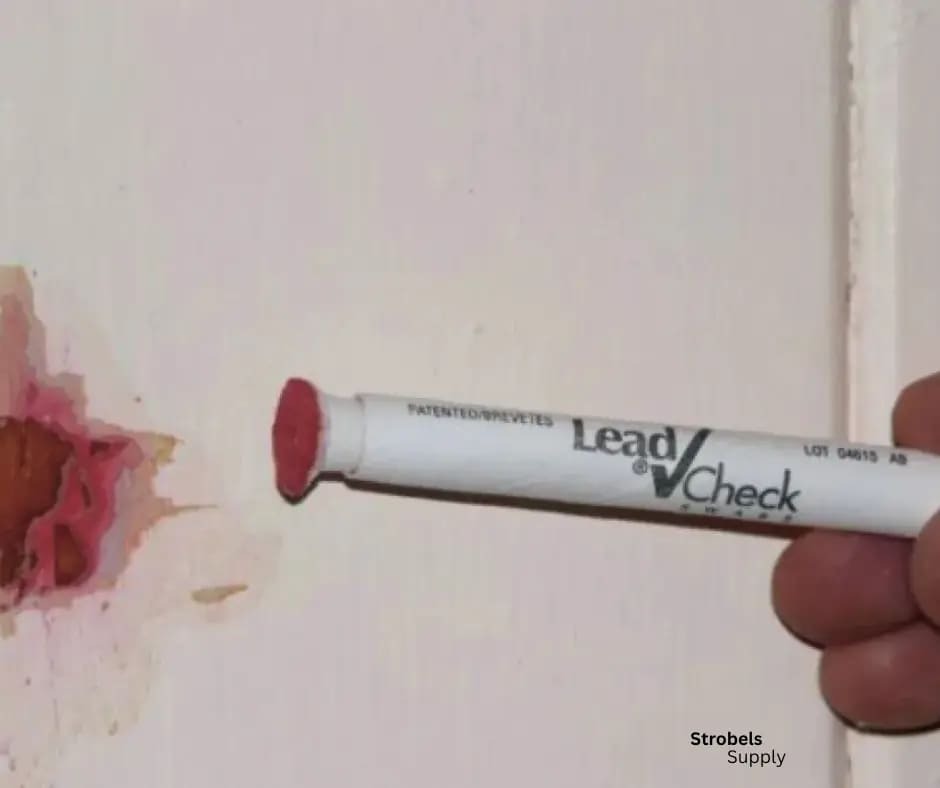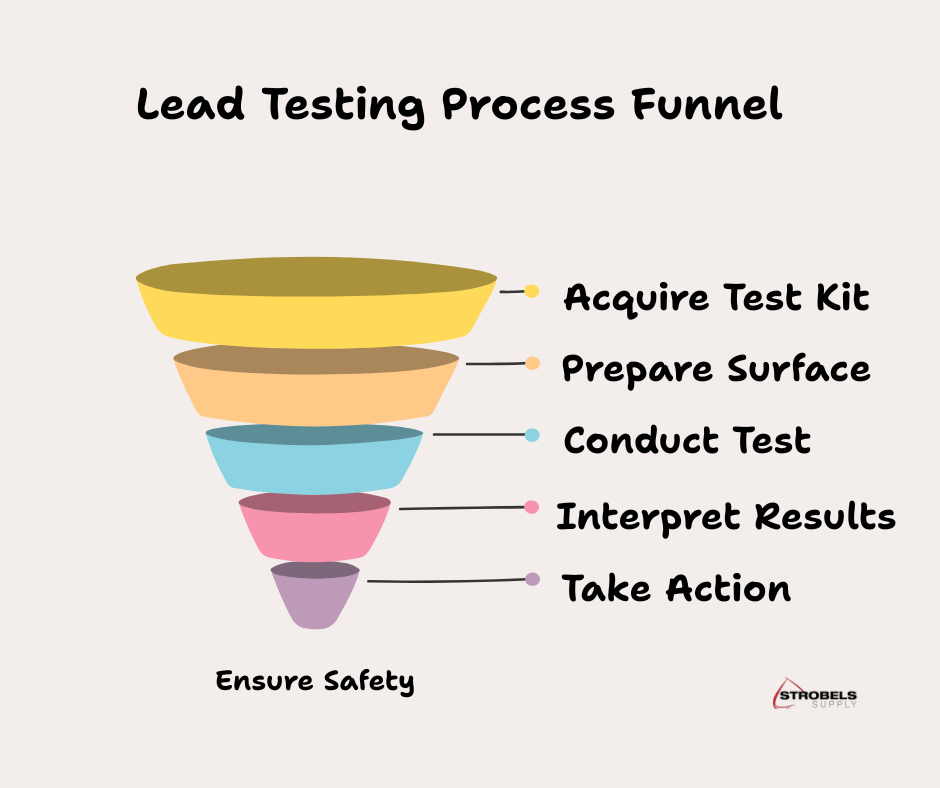Acquiring and Using Lead Test Kits
Oct 14th 2025
Lead exposure is still a major health risk especially in homes built before 1978, when lead-based paint was common. It can cause developmental delays in children, neurological damage, and other serious health issues. If you’re a homeowner, renovator, or property manager, using a lead test kit is the essential first step to identify potential hazards.
In this guide, you’ll get safe, step-by-step instructions, current EPA-recognized kit options, cost breakdowns, and practical tips for real-world use. Whether you’re DIY-testing or preparing to hire a pro, you’ll have the information you need to make smart, confident decisions.
Why Test for Lead?
Before diving into acquiring and using kits, understand the stakes. Lead paint deteriorates into dust or chips, which can be inhaled or ingested. The CDC states there's no safe blood lead level, with children under 6 at highest risk. Testing helps:
- Identify risks before renovations.
- Comply with EPA's Renovation, Repair, and Painting (RRP) Rule for pre-1978 homes.
- Protect family health—start with blood tests for kids if exposure is suspected.
If positive, remediation (like encapsulation or abatement) by certified pros is crucial.
Types of Lead Test Kits
Lead test kits detect lead in paint, dust, water, or soil. Focus on paint kits for home use:
- Chemical Swab Kits: Use rhodizonate (turns pink/red) or sodium sulfide (turns gray/black). EPA-recognized for reliability.
- Dust Wipe Kits: Test settled dust.
- Water Test Strips: For plumbing lead.
- XRF Devices: Professional handheld scanners (not DIY).
EPA-Recognized Lead Test Kits
Only use EPA-recognized kits for RRP compliance. As of October 2025, the EPA lists three that meet the negative-response criterion (95% confidence in detecting lead at 1.0 mg/cm² or 0.5% by weight):
- Luxfer Magtech LeadCheck™: Tests wood, drywall, plaster, ferrous metal. Fast, detects lead chromate. (Formerly 3M; transferred in 2024.)
- D-Lead® (ESCA Tech): Tests wood, drywall, plaster, ferrous metal. Includes tools for sampling.
- State of Massachusetts Kit: Tests drywall, plaster only; limited availability.
These kits do not meet the positive-response criterion, so false positives are possible. Not for stucco or non-ferrous metals.
|
Kit |
Substrates |
Key Features |
Approx. Cost |
|
Luxfer Magtech LeadCheck™ |
Wood, drywall, plaster, ferrous metal |
Instant results, EPA-recognized since 2010 |
$20–$40 (8 swabs) |
|
D-Lead® |
Wood, drywall, plaster, ferrous metal |
Detailed instructions, no freezing |
$25–$50 |
|
Massachusetts Kit |
Drywall, plaster |
State-specific, professional use |
Varies |
Source: EPA (last updated November 2024).
How to Acquire Lead Test Kits
Acquiring the right kit is straightforward but requires ensuring it's EPA-recognized and fresh (check expiration).
- Where to Buy:
- Online Retailers: Amazon or 3M for quick delivery.
- Manufacturer Sites: Luxfer Magtech (leadcheck.com, 800-503-4483), ESCA Tech (esca-tech.com, 414-962-3006).
- Specialty Suppliers: For bulk or professional use, try Strobel's Supply they carry EPA-recognized options like LeadCheck and D-Lead with fast shipping.
- Costs: $10–$50 per kit (8–10 tests). Bulk packs save money for pros.
- Tips: Buy from reputable sources to avoid counterfeits. For RRP work, only certified renovators can use for compliance. Homeowners: Kits are legal for personal use but not for official reports.
Avoid freezing kits they lose effectiveness.
How to Use a Lead Test Kit
Using a kit correctly is key to accurate results. Always wear gloves and follow manufacturer instructions. Here's a detailed guide for paint testing (most common).
Step-by-Step for Paint Testing (e.g., LeadCheck or D-Lead)

Positive Lead Paint Test Using LeadCheck Swab
- Prepare: Clean the surface. Use a utility knife to cut a small V-notch (1 cm²) exposing all paint layers—lead is often buried.
- Activate: Crush the kit's capsules (like a glow stick) and shake to mix chemicals.
- Apply: Rub the swab on the exposed area for 30 seconds.
- Interpret: Pink/red (rhodizonate) or gray/black (sulfide) means lead present. No change? Test multiple spots—false negatives happen.
- Verify: Use the included control card to confirm the kit works.
- Record: Note kit type, location, date, and results. For RRP, provide a report within 10 days.
For Water Testing
- Collect: Run cold water for 5–10 minutes, then collect a sample.
- Test: Dip strip (e.g., immunoassay) and wait (usually 8–10 minutes).
- Read: Lines indicate presence (e.g., two lines = lead >5 ppb).
Safety Tips: Test in well-ventilated areas. Positive? Stop work and call a pro. Dispose of used kits as hazardous waste.
Limitations of DIY Kits and When to Call Professionals
DIY kits are great for screening but have drawbacks:
- Accuracy: Can miss low levels or give false results on certain colors/surfaces.
- Legal: Not for real estate transactions—lenders require certified inspections due to potential errors and lack of chain-of-custody.
- Scope: Qualitative only; can't quantify lead amounts.
Call pros if:
- Positive result or child exposure suspected.
- Renovating pre-1978 homes (RRP requires certified renovators).
- Need comprehensive assessment (XRF or lab testing).
Professional costs: $300–$800 for full home inspection; $85/sample for lab analysis. Regional averages (2025): California ~$870, Florida ~$610.

Lead Testing Process Funnel
People Also Ask: Quick Answers
How to Use a Lead Testing Kit?
See the step-by-step above. Key: Expose layers, follow instructions, test multiples.
How to Get a Lead Testing Kit?
Buy online (Amazon, manufacturer sites) or locally (hardware stores). For pros, check Strobel's Supply for EPA kits.
How Much Does It Cost to Have Your Home Tested for Lead?
DIY: $10–$50. Pro: $300–$800 (varies by state; e.g., Illinois ~$570).
What Is the Main Reason Why Home Lead Test Kits Are Not Recommended for a Real Estate Transaction?
They're not certified for legal disclosures—false negatives/positives and no professional validation make them unreliable for transactions requiring accurate, documented results.
Conclusion
Acquiring and using lead test kits empowers you to protect your family and comply with regulations. Start with EPA-recognized options like LeadCheck or D-Lead, follow our steps, and escalate to professionals for positives. For reliable supplies, visit Strobel's Supply Lead Testing Kits. Test smart stay safe! If you have questions, consult EPA resources or a certified expert.

 US Dollars
US Dollars
